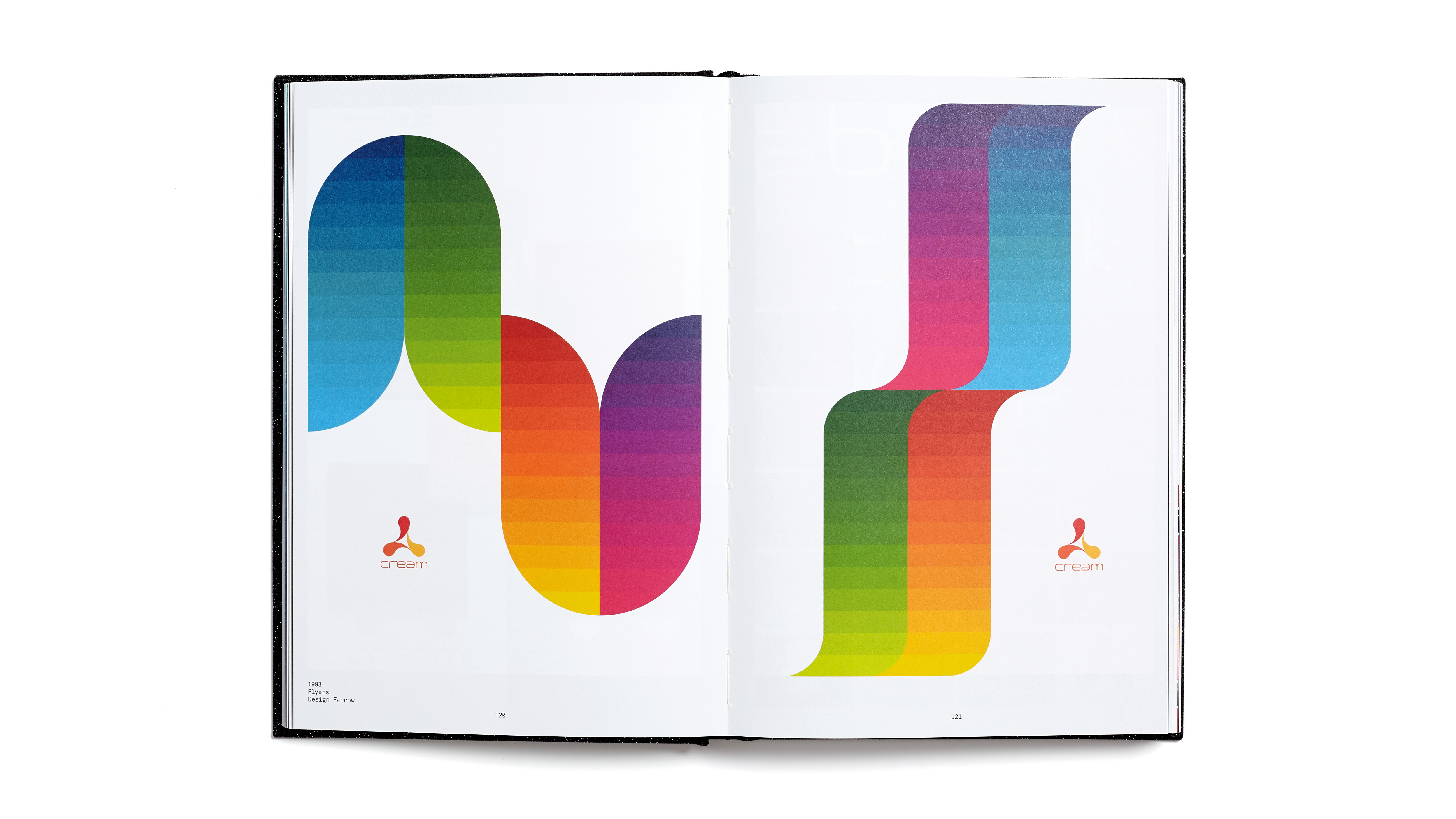How to self-publish a book
10 tips on how to successfully publish your own design book or magazine.
Designers and illustrators are always on the lookout for their next big project, hoping for that ideal commission; the one that puts their skills to the test, appeals to their passions and allows them to truly express themselves creatively. Hopefully, it will also be in complete harmony with their personal, ethical and social sensibilities.
You can wait a very long time for a client to hand you that perfect commission, but instead of waiting you could go ahead and turn one of your own ideas into a reality. For many creatives, self-publishing offers the opportunity not only to elevate their creativity but also to advance their careers and earnings.
There’s always the risk that your creation will be a drain on your time and resources. It may ultimately fall flat. On the other hand, you’ll use an array of skills you already have, and you’ll most likely learn a great deal about creating content, production, print processes, marketing, promotion, sales, distribution and so on. These things alone make it a worthwhile experience but, crucially, if you don’t give it a shot you’ll never know how good your ideal project could have been.
Here, we talk to those who have successfully self-published books, and see what tips we can learn from their experiences.
01. Don't wait around

One of the latest self-published design books is Radim Malinic’s Book of Ideas – vol 2, which follows on from his first, published in 2016. Inside, the London-based designer behind design studio Brand Nu shares his advice on how to make it in the creative industries, while at the same time letting his own design approach flourish via colourful abstract illustrations, photography, typographic treatments and more. Across an impressive range of chapters, he covers how to work creatively and in a mindful way. He wrote all the copy, designed the book and provided the imagery himself.
“I didn’t want to wait or look for a publishing deal — it would take years to achieve that. So I decided to take the power into my own hands and do it all myself,” says Malinic. “I’ve worked with many small independent record labels and could see that you don’t need more than one person to get something significant off the ground. I felt I had a few industry observations and thought processes to share with the world, so I decided to publish them myself.”
02. Get a hybrid publishing deal

A similar kind of inspiration struck the Manchester-based illustrator Ben Tallon when, just as his career was taking off, he hit a barren spell. It eventually led to the 2015 publication of Champagne and Wax Crayons, the 200-page book in which he discusses the common experiences of creatives across the industry – the highs, the lows, the frustration, the jubilation.
Daily design news, reviews, how-tos and more, as picked by the editors.
Ben worked with LID Publishing under a hybrid publishing deal to make it a reality. The company took care of printing, sales, distribution and overseas rights but Ben handled the editorial style, illustration, layout and a great deal of the promotion. Like Malinic’s books, Champagne and Wax Crayons has really resonated with young British and American designers. It has also been translated and published in Japanese.
03. Relinquish some control
While it’s tempting to see a self-publishing project as your baby, and to try and do everything, what Tallon learned from the experience is that in some areas you just have to let go. “It’s crucial to find ways of working with specialists in each field – editorially, on art direction, in sales, rights management and so on,” he explains. “Asking a lot of questions and not being too proud to admit that you need to be walked through certain parts of the process in order to understand how it works is important.”
Learning about the various aspects of publishing while creating the content and looking ahead to how you’ll promote your project does make self-publishing seem like hard work. It is. But if you get it right it’s certainly rewarding.
04. Take care of your finances

Nearly a decade ago, Adrian Shaughnessy and Tony Brook launched Unit Editions. They wanted to create not just one, but many books about their favourite subject: graphic design. The first was Studio Culture – a guide to setting up a studio. Since then they’ve published 40 titles, including a Paula Scher monograph, two stunning slip-cased volumes of British graphic designer Vaughan Oliver’s works, and a fascinating book of lost Soviet designs. Their next publication is a new book about The Designers Republic.
Publishing is a wonderful way to lose money
Adrian Shaughnessy
The hard work is one thing, according to Adrian Shaughnessy. The other is that you have to keep an eye on the money side of things. Designers have most of the skills needed to be publishers, but financial management proves to be such an important factor that it can’t be overlooked. “Publishing is a wonderful way to lose money,” he says. “The third Unit Editions partner is Trish Finegan. Trish looks after the finances. Without her we wouldn’t be here.
“It’s also worth mentioning the power of crowdfunding,” he continues. “We’ve had success with Kickstarter and five or six of our books have been funded this way. It has enabled us to make some important books on a scale and of a quality we couldn’t achieve without funding.”
05. Consider crowdfunding

Crowdfunding has been the crux of so many fantastic self-publishing efforts. It doesn’t only give hope to someone with a fresh idea, it actually gets them really excited. Rick Banks of the type foundry Face 37 used it to support his brilliant book Clubbed; the illustrator Lapin crowdfunded his vintage car sketchbook Oldies but Goldies; and Kickstarter funding drove Laura Jane Boast’s incredible mag Design Giving.
A site like Kickstarter will carry out multiple functions for a project. Firstly, it will help spread awareness on social channels. Secondly, it can help you gauge interest in your project and thereby scale your effort and personal investment in it. And thirdly, the sales revenue you receive through pre-orders will, as the name suggests, kick-start your self-publishing venture.
"The book was super-successful, raising £56,000 in the end,” says Rick Banks. “Kickstarter’s back end is very sophisticated – it gives you analytics to show where all the visits come from. Facebook and Twitter were the biggest referrers. In terms of admin it was great, too. It automatically generated spreadsheets with the ability to add notes about specific customers. One of the biggest errors I made was offering free shipping. I didn’t think the book would be so heavy – by the end it was £15 to ship each one abroad.”
06. Make a digital edition first

We all love print. We love it to death. But the cost can be formidable. The printing of Malinic’s latest book was financed through a partnership with Adobe. Another way around the issue is to launch digitally first, build up sales and awareness, then take the publication into print if it’s viable.
This is the route taken by London-based illustrator Rohan Eason and author Metin Karayaka, creators of the young adult adventure Benice, which is selling now on Amazon, Google Books and Bookshout. Eason created 22 full colour illustrations plus the covers, and the book is being published by Yunka, a company set up by Metin for the project and hopefully for future titles.
The book began as solely a digital edition, and has now been printed. Why digital at first? “This is to get a feel for the market size and build up a good amount of positive reviews before going to print. Metin can then publish quotes from good reviews on the back of the book, and have extra strength to push the book to distributors.”
When we spoke to him, Eason had been visiting every independent bookshop in London with a box of samples to drum up interest. He was paid up front for his illustrations but will also gain a passive income through royalties based on sales. All the bookshop owners were surprised to meet an illustrator so passionate.
07. Use it as a chance to experiment
Creatively, the attraction of this self-published project for Eason was the opportunity to experiment. Black and white, highly detailed ink illustrations are what he normally produces and that’s what most publishers commission him to do. With Benice he’s been able to extend his style on his own terms. “A publisher will require you to give them exactly what they want, giving little scope for experimentation or exploration,” he says. “In this book I added colour ink in blocks to my black and white images. It’s a new method for me, and I’m happy to say it’s been very successful.”
08. Do your research

Imagine an illustrator trudging across London, meeting booksellers directly and pitching an independently published book to each of them over and over again. The true level of commitment required to self-publish begins to become clearer. Your skills and creativity will go into the project. You’ll more than likely spend some money on it. Passion is essential. But it’s also going to eat into your time.
Tallon spent three years writing and revising his book. Malinic also spent years building up to the release of his first Book of Ideas. Boast, the Manchester designer behind the magazine Design Giving, spent six years developing what turned from an embryonic idea into the beautiful publication you can see today. At every level it has been lavished with care and consideration.
“First came the name, Design Giving, which I derived from the compression of the phrase ‘where design thinking becomes thoughtful giving’ – which was my way of being able to describe a process and a way of designing that is more considerate to both people and the planet,” she explains. “This phrase shaped both the structure of the magazine’s four feature sections – Design, Thinking, Thoughtful and Giving – informing the brand’s aesthetic and the type of content featured.”
A deep interest in independent, environmentally-focused design is what inspired Boast, and over time she identified a wide range of creators and companies to work with. “When I was ready for content, I had a big list of designers I’d admired from afar, or had previously met at design fairs that I wanted to feature. After the initial email outlining the idea, we worked together to individually tailor the stories and interviews based around the magazine structure.”
Now that the first issue is out, the style has been defined and Boast has built up a network of contacts and a following via the Kickstarter campaign she used to fund it. Her next step will be to publish editions annually.
09. Involve readers from the beginning

Based in The Hague, Netherlands, Typotheque founder Peter Bil’ak wanted to go even further when he started publishing the magazine Works That Work. Focusing on functional design in unexpected places, the magazine had a team of five and a variety of contributors were heavily involved in its creation. More than that, Works That Work recruited its readers to participate in its distribution. And it worked.
“We involved our readers all the way,” says Bil’ak. “They would contribute content to the magazine, they fully financed it and they helped to distribute it. Forty per cent of the print run – 5,000 copies – was sold using our unorthodox ‘social distribution’ method. This meant we bypassed any distribution and shops, and readers would buy boxes of magazines for their social circles, for schools and offices.
The feeling of inclusivity and community involvement was the main motivation for people to help us
Peter Bil’ak
”Readers who supported the magazine in this way were rewarded as well, receiving the same cut as a distributor would get for its work. “But more than the money, the feeling of inclusivity and community involvement was the main motivation for people to help us,” continues Bil’ak.
'If it worked so well, then why did it close after 10 issues?' you might be thinking. The answer illustrates another important point about self-publishing. Bil’ak always planned to close Works That Work after 10 issues – its very lifecycle was by design. A self-publishing project begins with a celebration, but even a runaway success can eventually start to feel like regular job, an obligation, possibly even a slog for those responsible for its founding. This way everyone who contributed to Works That Work could enjoy it while it lasted, and never consider it to be a burden.
10. Focus on the positives

Still, for those who haven’t even started self-publishing yet, thinking about the end perhaps isn’t the best beginning. The main thing to focus on is positive reasons to launch your project, rather than the reasons to avoid pursuing it.
Illustrator Rumi Hara is enjoying growing success creating her own children’s books and comics and selling them on Etsy. She offers the perfect endnote: “I’ve actually met a lot of people who want to self publish, but won’t actually do it,” says Hara. “There are so many reasons not to, like, what’s the point? Why spend so much time and energy on something that may not lead to anything? But you’ll end up with a real, physical book that you made yourself and someone can read it. That’s an incredible thing.”
This article originally appeared in Computer Arts, the world's leading design magazine. Buy issue 287 or subscribe here.
Read more:

Garrick Webster is a freelance copywriter and branding specialist. He’s worked with major renewable energy companies such as Ecotricity and the Green Britain Group, and has helped develop award-winning branding and packaging for several distilleries in the UK, the US and Australia. He’s a former editor of Computer Arts magazine and has been writing about design, creativity and technology since 1995.
